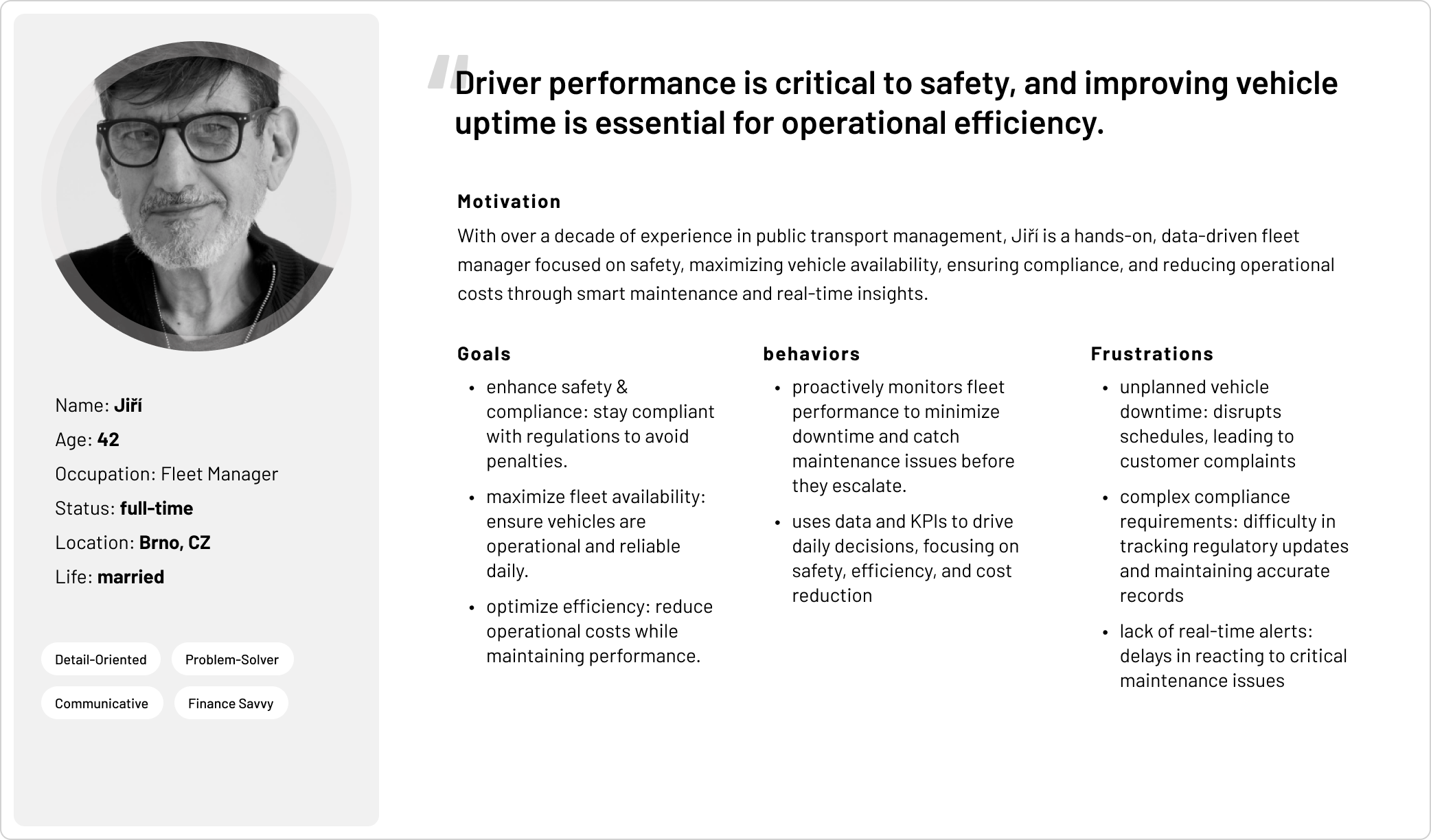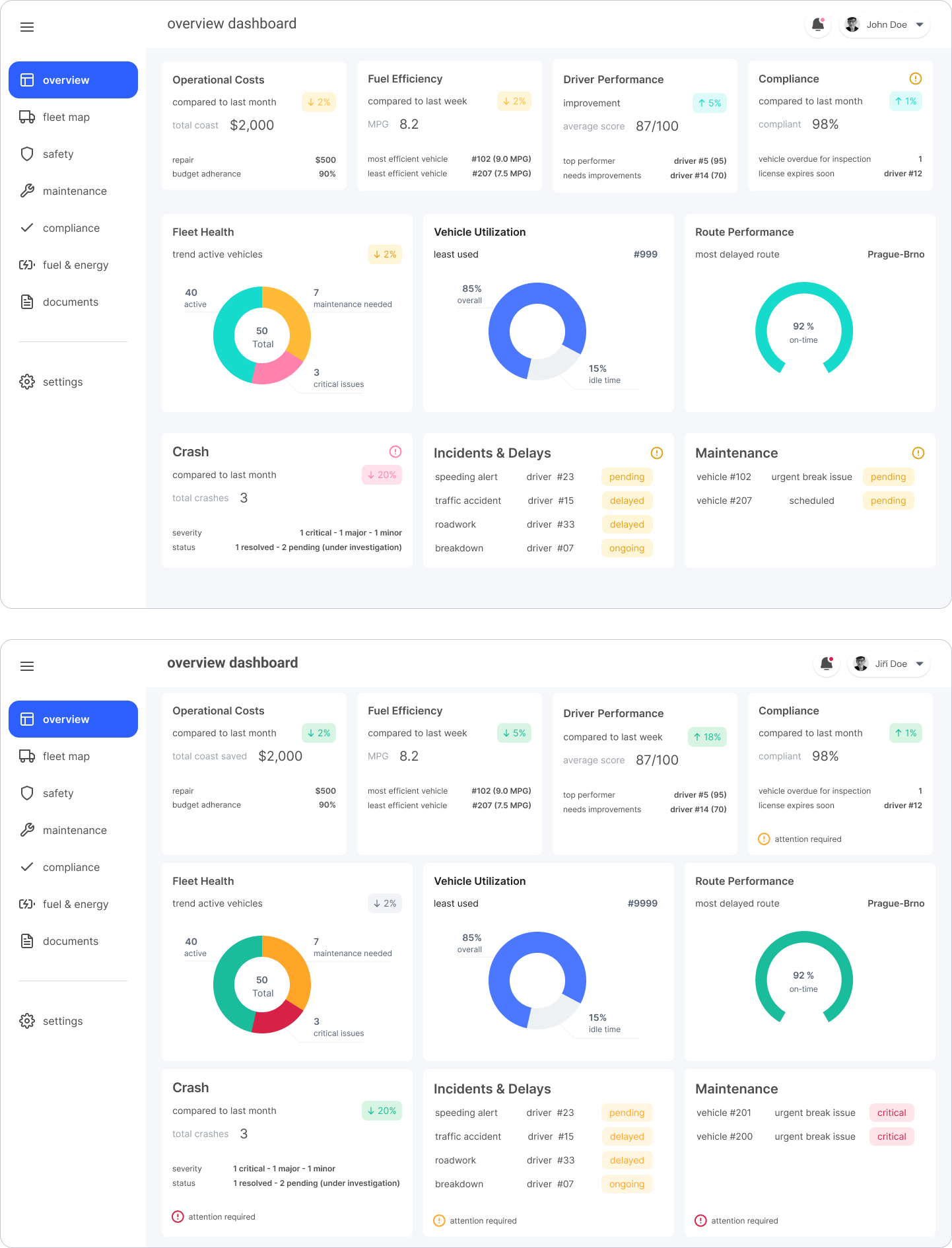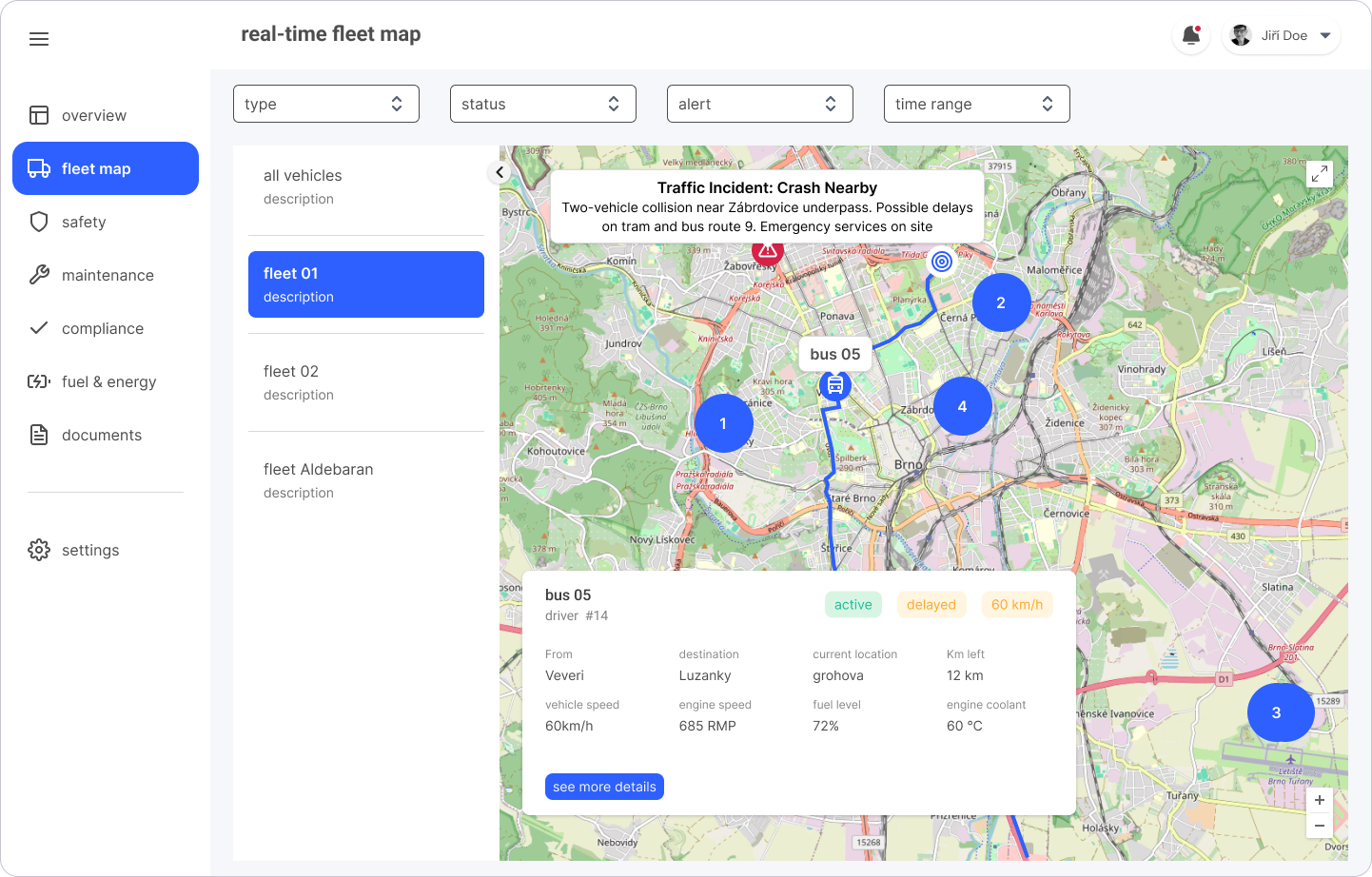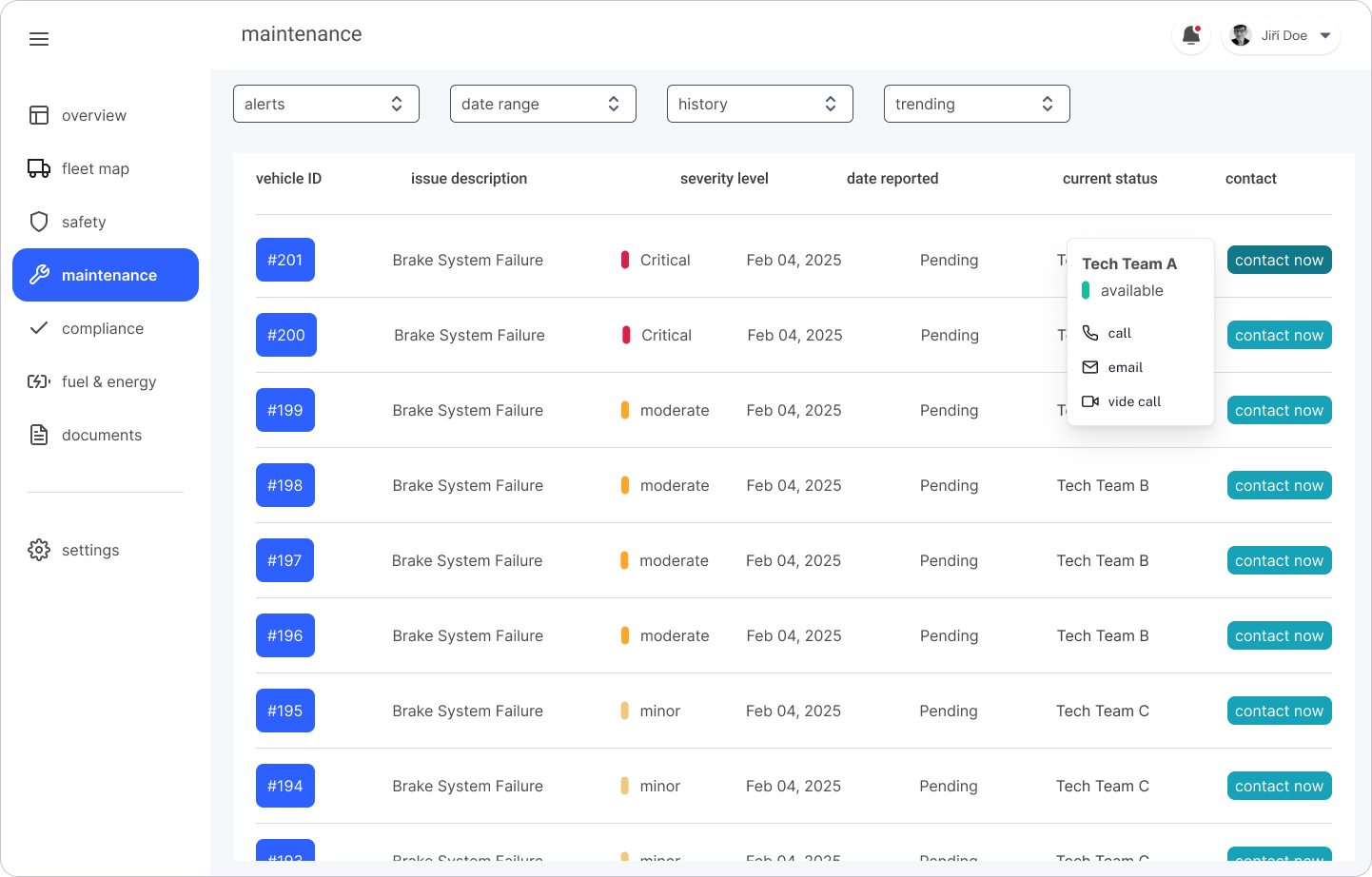Goals & Context
Summary: A fast-paced design sprint aimed to create a demo of
a fleet SaaS dashboard, within 5 days, covering research, usability
testing, flows, interface, iterations, and case study . This project
was initiated
to explore the design challenges within fleet management
services, in the mobility industry.
Given my interest in mastering complex data visualization and
user-centric solutions, i aimed to
quickly familiarize myself with the industry's needs.
Hypotheses
At an operational level, in e.g. public transportation, fleet managers a required to efficiently manage bus fleets, ensure compliance and enhance passengers safety. Dealing with various issues (safety, compliance, efficiency) might lead them to information overload.
Fleet managers might be overloaded with information of different sorts and therefore need an interface that provide information "at a glance", to help to operate with ease.
Research & Insights
Through generative research, I gained early insights that informed a persona, clarifying both the fleet manager’s responsibilities and the decision-making challenges they face daily, as outlined below.
Fleet Manager Role:
Fleet managers typically hold
mid-level operational positions, focusing on the hands-on
management of daily fleet activities. They prioritize
efficiency, safety, and cost control rather than strategic
decision-making. Key responsibilities include:
- Monitoring fleet performance (availability, fuel efficiency, maintenance needs)
- Ensuring vehicle safety and compliance
- Coordinating with drivers and maintenance teams
- Responding to operational alerts (vehicle breakdowns, driver issues)
- Reporting to top management
Decision-Making Space:
The “decision-making space”
refers to the
cognitive environment in which fleet managers interpret
information and make operational choices. Fleet managers face multiple challenges daily—safety, compliance,
and efficiency—which can lead to information overload. They
must rapidly process inputs such as:
- Inputs: vehicle telemetry, driver reports, passenger feedback, maintenance alerts.
- Processing: filtering, prioritizing, and interpreting signals (what's noise vs. critical).
- Outputs: actions (reroute, schedule maintenance, assign a new driver, alert stakeholders).

Problem Framing
A fleet manager may feel anxious about missing critical information that could impact user safety—a “blind spot” where unknown issues might go unnoticed or have unforeseen consequences. The core challenge is providing access to the most critical data within a high-volume information environment, helping managers filter signals, distinguish noise from urgent alerts, and anticipate issues before they escalate.
Ideation & Prototyping
I first mapped the user flow to outline key tasks and visualize how screens and information would be structured, helping to guide the information architecture. Based on this, I created wireframes, mid-fidelity mockups, and a clickable prototype to test with users as early as possible.



Usability Testing & Insights
I conducted remote usability tests with clickable prototypes to evaluate user understanding of information, navigation flow and contact features. Key insights included:
- Tested comprehension of dashboard metrics (costs, crash rates)
- Assessed navigation preferences (cards vs side menu)
- Evaluated interaction with fleet map and live danger alerts
- Identified missing features: multiple contact methods and clearer alert visuals

Iteration & Validation
A second usability test confirmed improved metric comprehension and map interaction but revealed continued navigation ambiguities and contact access issues, guiding further refinements.
Outcome
Delivered three key desktop views (dashboard, real-time map, and maintenance). These are presented as mid-fidelity mockups to communicate structure, layout and visual intent — optimized for clarity over pixel-perfection due to the tight 5-day sprint format.



Summary & Next Steps
Through usability testing and rapid iterations, I refined the dashboard to improve clarity, navigation, and in-context communication—enabling fleet managers to quickly contact the assigned maintenance team when issues arise. This iterative process revealed opportunities to streamline contact and alert workflows, establish a clearer information hierarchy to prevent overload, and implement actionable improvements for critical UI components.
Moving forward, the focus will be on iteratively refining existing screens, adding new high-priority features, and continuously testing with users to ensure the dashboard remains intuitive, efficient, and aligned with fleet managers’ needs.